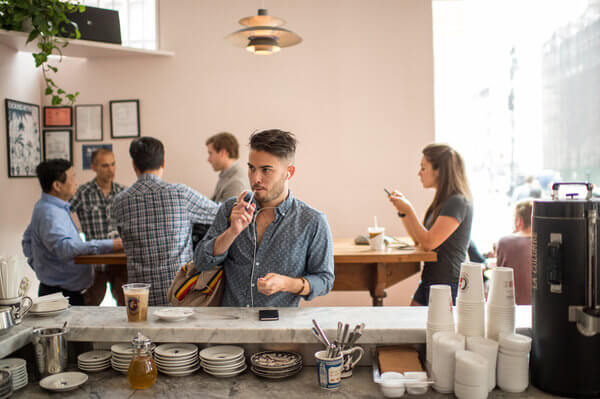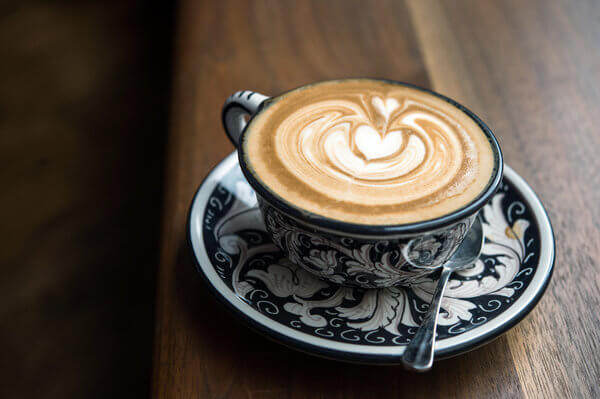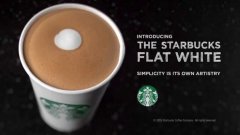Maybe you're not drinking cappuccino at all (reprinted)
For professional baristas, please follow the coffee workshop (Wechat official account cafe_style)
[first let's take a look at the cappuccino written by others]
In fact, seniors have their own ideas and observations about cappuccino.
Because I first learned cappuccino, about 13.14 years ago.
An era of brewing and rather chaotic boutique coffee
So the senior students of various schools can be regarded as dabbling in it.
And evolved to the competition or the mainstream milk foam proportion and cooking method in the industry.
May also be able to tell a context
But today, let's take a look at this article that many people have discussed these days.
In fact, a lot of questions have been raised, such as:
1. The correct name of Cabo
two。 The size of the khaki
3. Cabo's milk foam.
4. Convergence and layering
All the above problems have something to do with the evolution of Cabo.
Although the translation is not very accurate, it can generally be understood.
The seniors hope that you can read this article first.
And think about it based on what you think of Cabo.
Do you have any answers to all the questions in the article?
The seniors will focus on this article tomorrow.
To come up with the idea of cappuccino.
Let's compare it with you.
There are a lot of logic and practice problems.
It would be interesting to think carefully about the comparison.
And there will be a clearer understanding of cappuccino!
Maybe you're not drinking cappuccino at all (reprinted to New York Times International Life)

What if the cappuccino you drank this morning wasn't really a cappuccino? How awful. And even more frightening is: what if your little white coffee (flat white) is the authentic cappuccino?
Once upon a time, cappuccino was easy to identify. An espresso with hot milk, topped with protein frost. However, the former king of specialty coffee drinks is now suffering from an identity crisis.
Even among experts, there is no small dispute about what a cappuccino is. In the industry, they all focus on the size of the coffee as a distinguishing feature from each other.
"in the United States, cappuccinos have small, medium and large cups, which are actually made," said food and coffee writer Oliver Strand. "A cappuccino is basically a four-ounce drink."

Todd Carmichael, founder of La Colombe, a coffee roasting company with cafes in New York and other places, believes that one should not focus on the weight factor. "We made the cappuccino flexible," he said. "at 8 to 10 ounces, its flavor has not gone away. It's just not so strong. "
Others cling to the old-fashioned definition of cappuccino, with the layering of several ingredients being the focus. "the goal is three different layers: coffee, hot milk and foam with bubbles (not fine)," chef and writer Mario Batali said in an email. "but to drink in the Italian way, you have to stir and mix the three layers together."
After stirring, the coffee appears a special reddish brown, which is close to the color of the clothes on the monks of the Franciscan order (Order of Capuchin Friars Minor). Some people think that this is where the name of the drink comes from.
Joe has 13 stores in New York and Philadelphia, and its cappuccino is not layered, and there are no bubbles visible on top. "the taste should be the same from the first to the last," said Jonathan Rubenstein, one of the founders of Joe.
The Joe version appears to violate the cappuccino standard promoted by the American Special Coffee Association (Specialty Coffee Association of America) and its coffee makers' association (Barista Guild), which calls for at least one centimeter of milk foam.
Only one centimeter? I feel like I'm going to be a latte if I'm not careful. But this is the standard of SCAA. "it's kind of ridiculous," said David Schomer, founder of Espresso Vivace in Seattle.
Some coffee experts believe that it is those "latte art bitches" that cause the modern cappuccino to have so few bubbles. They say that in an age when there is no Instagram, less foam helps baristas to make complicated tricks.
Given that the definition of cappuccino is changing, some people may be particularly sentimental about the fashionable version of the era when they started drinking coffee. "in 1985, the best cappuccino had a five-inch foam mountain sprinkled with cinnamon," restaurant owner Daniel Meyer wrote in an email. "We said goodbye to milk foam in 2006."
Carl Mitchell of the influential Seattle cafe Torrefazione Italia,La Colombe recalls what a cappuccino looked like in a time when specialty coffee was far from popular. "cappuccinos are very thick, protein frost-like bubbles," he said. "putting an olive on it won't sink."
Kenneth Nye (Kenneth Nye), who opened the Ninth Street Italian Cafe (Ninth Street Espresso) in New York's East Village in 2001, was fed up with customers who were convinced they knew what an "authentic" cappuccino was and removed the names of all drinks from the menu. "it's all 'Italian concentrate and milk,'" Nai said. "We no longer use names because all names are stupid."
Nai is particularly annoyed by the newly popular Little White Coffee, a drink made from espresso and milk that seems to have come from Australia or New Zealand. "if you go to 10 self-proclaimed Little White Coffee authorities and ask them what Xiaobai Coffee is, you can get at least five theories," he said. "this is to make customers in awe of the whole production process."
Not all people who care about such issues, like Nye, are dismissive of coffee taxonomy. For example, the National Italian espresso Institute (Instituto Nazionale Espresso Italian) calls for the use of "25ml espresso and 100ml steam to beat milk bubbles". Italian coffee lovers are so committed to the idea of authentic cappuccino that Marco Lion, chairman of the country's agricultural committee, proposed in 2007 that the government should issue certificates to cafes that use the right production methods. The government was disbanded before any action could be taken. )
But some people also disapprove of the so-called Italian standard of perfection. "it's diverse even in Italy," Nai said. "the only thing they have in common is the small portion size, which is considered a morning drink."
Andy Smith, a culinary historian at the New College (New School), says cappuccino may have originated in Austria. It became popular with the rise of Starbucks, which Howard Schultz (Howard Schultz) acquired in the late 1980s and became bigger and bigger (and then cappuccino). "they should be responsible for it," Smith said.
Perhaps the best cappuccino does not require fancy barista techniques or other decorations. "what is the pursuit of perfection," Batari said.
Important Notice :
前街咖啡 FrontStreet Coffee has moved to new addredd:
FrontStreet Coffee Address: 315,Donghua East Road,GuangZhou
Tel:020 38364473
- Prev

Revealing the Myth of Coffee freshness (part two)
Exchange of professional baristas Please follow the coffee workshop (Wechat official account cafe_style) Q3: some experts in the United States say: coffee should be kept in the freezer, is that right? When the temperature drops, the aging of coffee beans slows down. Changes in all ingredients, especially those related to aroma, will slow down 10 times. If your coffee is 10 degrees below room temperature, the aging rate will slow down twice as fast.
- Next

Interpretation [maybe you're not drinking a cappuccino at all] (part 1)
Communication of professional baristas Please follow the Coffee Workshop (Wechat official account cafe_style) this article is a bit difficult to write, because it is based on the feedback thinking that you may not be drinking a cappuccino at all, so the seniors still respond according to the content of the article, so there will be a contrast in reading the same article before and after reading. At the beginning of the following text, maybe what you drink is not a cappuccino at all.
Related
- Beginners will see the "Coffee pull flower" guide!
- What is the difference between ice blog purified milk and ordinary milk coffee?
- Why is the Philippines the largest producer of crops in Liberia?
- For coffee extraction, should the fine powder be retained?
- How does extracted espresso fill pressed powder? How much strength does it take to press the powder?
- How to make jasmine cold extract coffee? Is the jasmine + latte good?
- Will this little toy really make the coffee taste better? How does Lily Drip affect coffee extraction?
- Will the action of slapping the filter cup also affect coffee extraction?
- What's the difference between powder-to-water ratio and powder-to-liquid ratio?
- What is the Ethiopian local species? What does it have to do with Heirloom native species?

